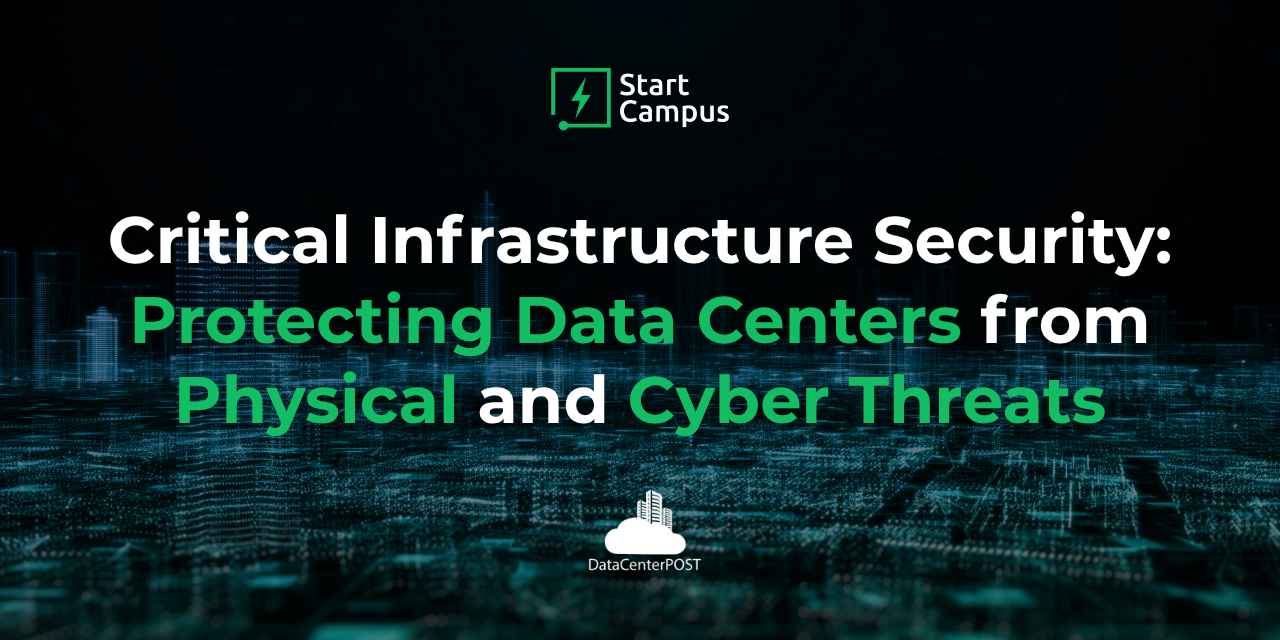Originally posted on Start Campus.
Critical infrastructure (CI) is the foundation of essential services like power, water, healthcare, and transportation, all of which rely increasingly on digital systems housed within data centers. As data centers store and process vast amounts of information critical to multiple sectors, they face rising threats from both natural and human-made sources. This article provides a comprehensive examination of CI, emphasizing data center security and addressing physical and information security threats. We’ll also discuss the NIS2 Directive and its role in enhancing the resilience of critical infrastructure in the European Union.
1. What is Critical Infrastructure?
1.1. Defining Critical Infrastructure
Critical infrastructure refers to the physical and cyber systems that are essential to the security, economy, health, and safety of a nation. According to CISA (Cybersecurity and Infrastructure Security Agency) in the U.S. and the European Union Agency for Cybersecurity (ENISA) in the EU, critical infrastructure includes sectors like energy, water, transportation, finance, healthcare, and IT services. Disruption in one of these sectors can create cascading effects, impacting both national and international stability.
1.2. Why Data Centers are Critical Infrastructure?
Data centers serve as the core of modern digital infrastructure, enabling cloud computing, financial transactions, e-commerce, healthcare information systems, and communication networks. As the demand for remote access, digital services, and data processing continues to grow, data centers’ roles become increasingly critical. Any downtime in a data center can lead to disruptions in essential services, creating ripple effects across other CI sectors. The sensitive information stored in data centers, including financial data, personal information, and government records, also makes them high-value targets for both cyber and physical threats.
1.3. Examples of Critical Infrastructure Sectors
- A) Energy: Power generation, transmission, and distribution systems are crucial to nearly every other sector. A cyberattack on an energy grid could cripple hospitals, transportation, and water treatment facilities, to mention just a few examples.
- B) Healthcare: Hospitals, clinics, and emergency response systems depend on data for patient care, medical records, and drug inventory. Data centers that store health data are therefore critical to healthcare CI and, if properly used, are important mitigation strategies against ransomware attacks against hospitals and healthcare facilities.
- C) Transportation and Logistics: Airports, shipping ports, and transportation networks rely heavily on data centers for logistics, security, and communication. A disruption could impact not only travel but also the supply chain for essential goods.
- D) Finance: Banking and financial markets depend on data centers for transaction processing, stock exchanges, and secure data storage. A breach or downtime in this sector could disrupt the entire financial system. As the legislation on different countries becomes more and more flexible about the banking sector using cloud providers instead of their own data centers (on-premises approach), protecting cloud-related data centers is increasingly important.
To continue reading, please click here.


